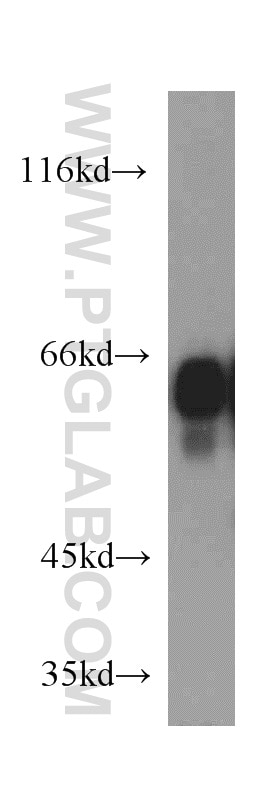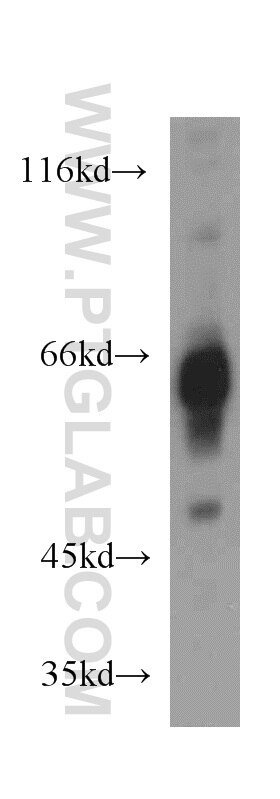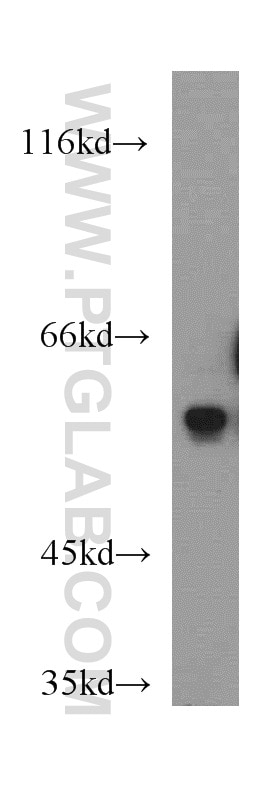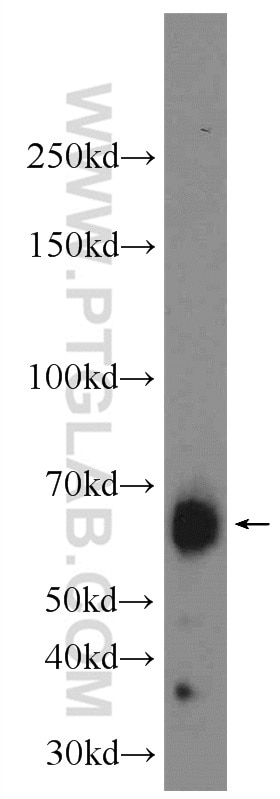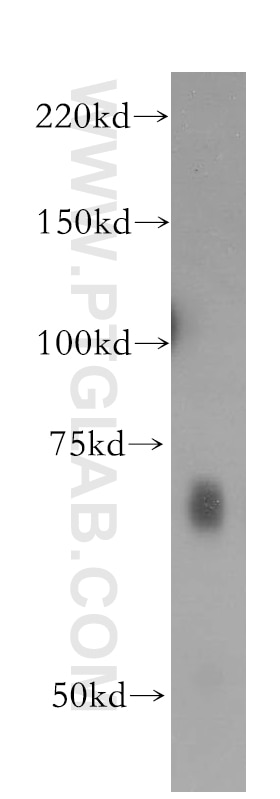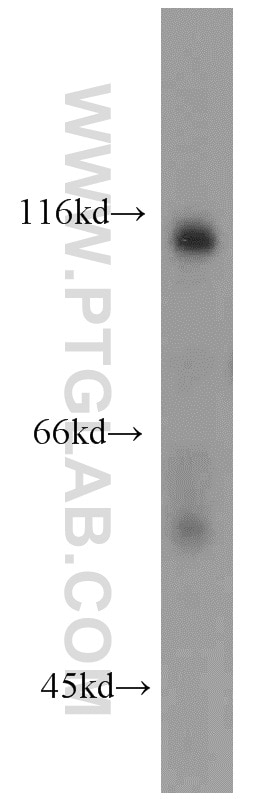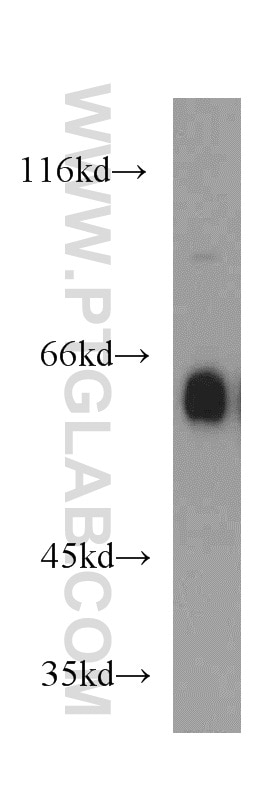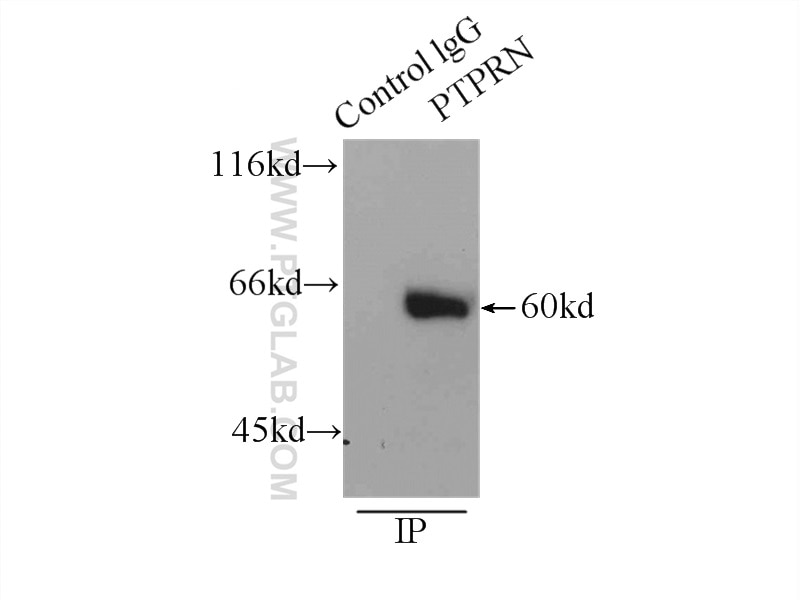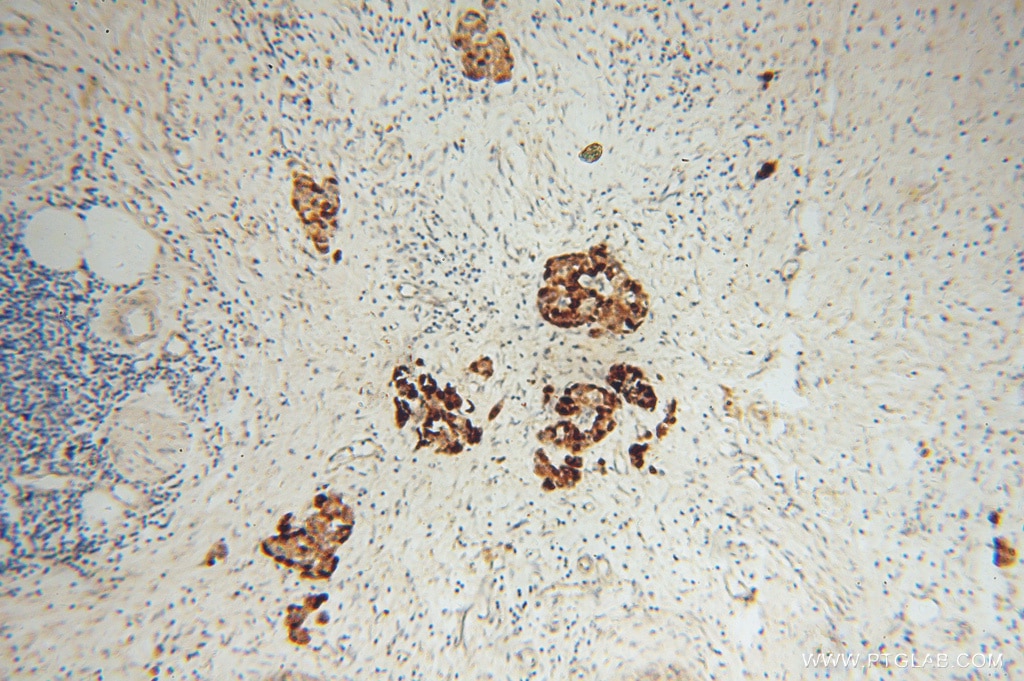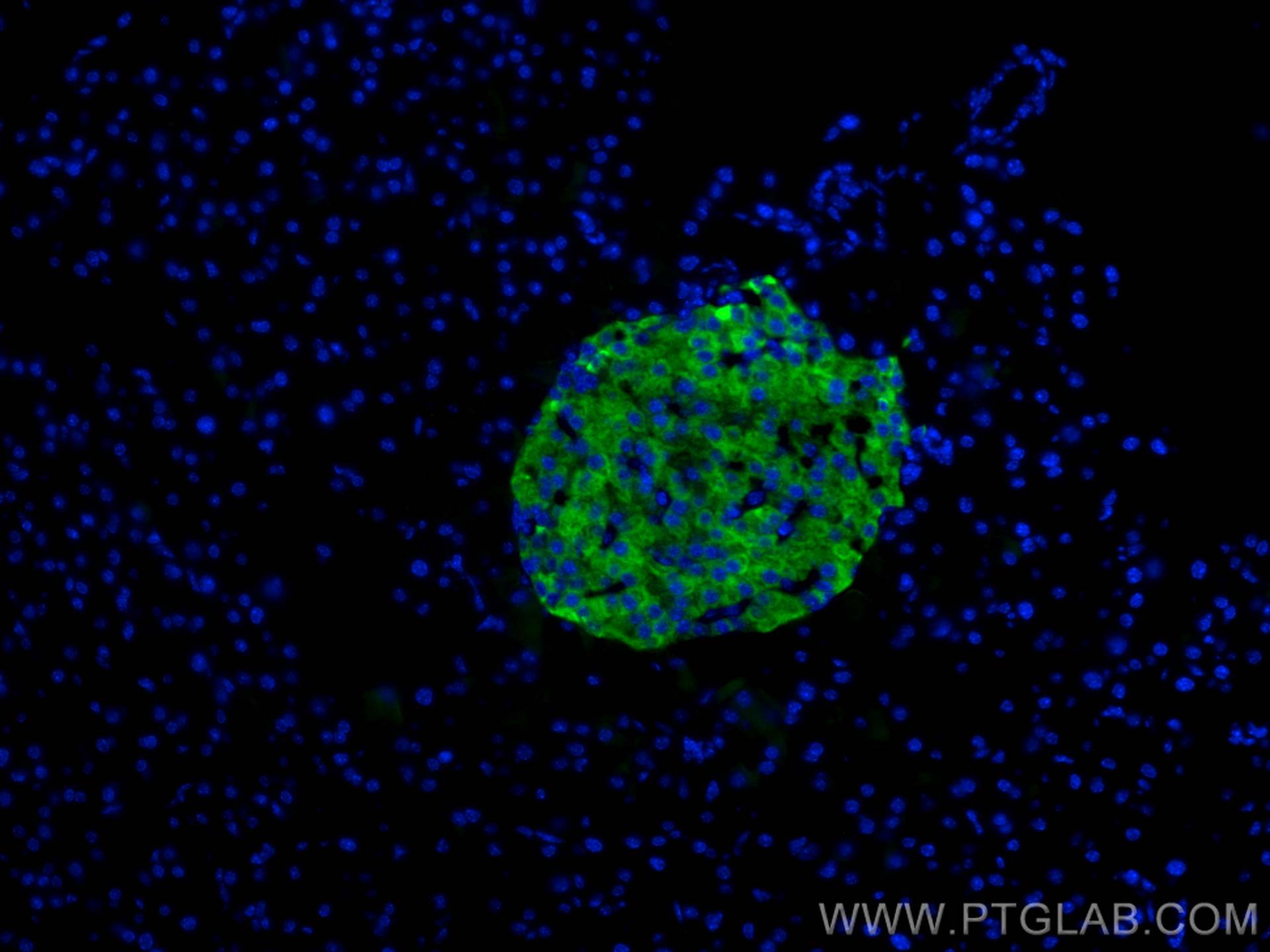IA-2/PTPRN Polyklonaler Antikörper
IA-2/PTPRN Polyklonal Antikörper für WB, IHC, IF-P, FC (Intra), IP, ELISA
Wirt / Isotyp
Kaninchen / IgG
Getestete Reaktivität
human, Maus, Ratte
Anwendung
WB, IHC, IF-P, FC (Intra), IP, ELISA
Konjugation
Unkonjugiert
Kat-Nr. : 10584-1-AP
Synonyme
Geprüfte Anwendungen
| Erfolgreiche Detektion in WB | Maushirngewebe, HEK-293-Zellen, Mausnierengewebe, Rattenhirngewebe |
| Erfolgreiche IP | Maushirngewebe |
| Erfolgreiche Detektion in IHC | Ratten-Pankreasgewebe, humanes Pankreaskarzinomgewebe Hinweis: Antigendemaskierung mit TE-Puffer pH 9,0 empfohlen. (*) Wahlweise kann die Antigendemaskierung auch mit Citratpuffer pH 6,0 erfolgen. |
| Erfolgreiche Detektion in IF-P | Maus-Pankreasgewebe |
| Erfolgreiche Detektion in FC (Intra) | HEK-293-Zellen |
Empfohlene Verdünnung
| Anwendung | Verdünnung |
|---|---|
| Western Blot (WB) | WB : 1:500-1:1000 |
| Immunpräzipitation (IP) | IP : 0.5-4.0 ug for 1.0-3.0 mg of total protein lysate |
| Immunhistochemie (IHC) | IHC : 1:50-1:500 |
| Immunfluoreszenz (IF)-P | IF-P : 1:50-1:500 |
| Durchflusszytometrie (FC) (INTRA) | FC (INTRA) : 0.40 ug per 10^6 cells in a 100 µl suspension |
| It is recommended that this reagent should be titrated in each testing system to obtain optimal results. | |
| Sample-dependent, check data in validation data gallery | |
Veröffentlichte Anwendungen
| WB | See 2 publications below |
| IHC | See 3 publications below |
Produktinformation
10584-1-AP bindet in WB, IHC, IF-P, FC (Intra), IP, ELISA IA-2/PTPRN und zeigt Reaktivität mit human, Maus, Ratten
| Getestete Reaktivität | human, Maus, Ratte |
| In Publikationen genannte Reaktivität | human |
| Wirt / Isotyp | Kaninchen / IgG |
| Klonalität | Polyklonal |
| Typ | Antikörper |
| Immunogen | IA-2/PTPRN fusion protein Ag0923 |
| Vollständiger Name | protein tyrosine phosphatase, receptor type, N |
| Berechnetes Molekulargewicht | 105 kDa |
| Beobachtetes Molekulargewicht | 60-65 kDa, 106-115 kDa |
| GenBank-Zugangsnummer | BC007713 |
| Gene symbol | IA-2/PTPRN |
| Gene ID (NCBI) | 5798 |
| Konjugation | Unkonjugiert |
| Form | Liquid |
| Reinigungsmethode | Antigen-Affinitätsreinigung |
| Lagerungspuffer | PBS with 0.02% sodium azide and 50% glycerol |
| Lagerungsbedingungen | Bei -20°C lagern. Nach dem Versand ein Jahr lang stabil Aliquotieren ist bei -20oC Lagerung nicht notwendig. 20ul Größen enthalten 0,1% BSA. |
Hintergrundinformationen
IA-2/PTPRN is a member of the protein tyrosine phosphatase (PTP) family, which contains a transmembrane region, an intracellular PTP-like domain and an extracellular N-terminus. Experiments found that IA-2/PTPRN localizes to secretory granules and is exclusively expressed in neuroendocrine cells (including pancreatic islets cell).(PMID: 10027571). IA-2/PTPRN was found to be a major autoantigen in insulin-dependent diabetes mellitus and the detection of autoantibodies against IA-2/PTPRN is commonly used as a diabetes diagnosis marker.
Protokolle
| PRODUKTSPEZIFISCHE PROTOKOLLE | |
|---|---|
| WB protocol for IA-2/PTPRN antibody 10584-1-AP | Protokoll herunterladen |
| IHC protocol for IA-2/PTPRN antibody 10584-1-AP | Protokoll herunterladenl |
| IF protocol for IA-2/PTPRN antibody 10584-1-AP | Protokoll herunterladen |
| IP protocol for IA-2/PTPRN antibody 10584-1-AP | Protokoll herunterladen |
| FC protocol for IA-2/PTPRN antibody 10584-1-AP | Download protocol |
| STANDARD-PROTOKOLLE | |
|---|---|
| Klicken Sie hier, um unsere Standardprotokolle anzuzeigen |
Publikationen
| Species | Application | Title |
|---|---|---|
Front Cell Dev Biol Overexpression of PTPRN Promotes Metastasis of Lung Adenocarcinoma and Suppresses NK Cell Cytotoxicity. | ||
J Biol Chem Down-regulation of the islet-specific zinc transporter-8 (ZnT8) protects human insulinoma cells against inflammatory stress. | ||
PLoS One Sensitive detection of multiple islet autoantibodies in type 1 diabetes using small sample volumes by agglutination-PCR. | ||
Cell Physiol Biochem Prognostic Value of Phosphotyrosine Phosphatases in Hepatocellular Carcinoma. | ||
Transl Lung Cancer Res Construction and validation of a prognostic model based on oxidative stress-related genes in non-small cell lung cancer (NSCLC): predicting patient outcomes and therapy responses |
